
Camps for Croats on the territory of Serbia
“From Banatski Despotovac, 35 reservists were mobilized who are still in Zrenjanin. I have information that on September 8, 1991, they did not receive lunch in the barracks, so their relatives were forced to bring food for their loved ones. I hear that our state, respecting international conventions, provides regular meals for prisoners in the Begejci camp, and we all know that they are hardened enemies of Serbia. I ask, how is it possible that we feed the enemies better than our own soldiers?”
After a three-month siege of the city, the Yugoslav People’s Army (JNA), with the help of the Serbian Territorial Defense (TO) and volunteer units, captured Vukovar on November 18, 1991. Following the capture of the city, the JNA detained a large number of members of Croatian forces and civilians, among whom were the wounded, women, minors, and the elderly, with the intention of carrying out exchanges for captured JNA personnel.
The JNA transported the detainees by buses and trucks to the territory of Vojvodina, where, as early as September 1991, several camps had been established for prisoners of war from the territory of Croatia.
Establishment of the camp
All the camps, except for Niš which was under the responsibility of the 3rd Military District (VO) of the JNA, were within the responsibility zone of the 1st Military District of the JNA. The camps were guarded by members of the JNA Military Police. Officers of the JNA were formally appointed as camp commanders, however, real control over the camps was exercised by the Security Administration of the Federal Secretariat for National Defense (UB SSNO).
Until the second half of September 1991, the 1st Military District was headed by Colonel General Aleksandar Spirovski, after which Colonel General Života Panić was appointed to the position. The head of the UB SSNO was General Aleksandar Vasiljević.
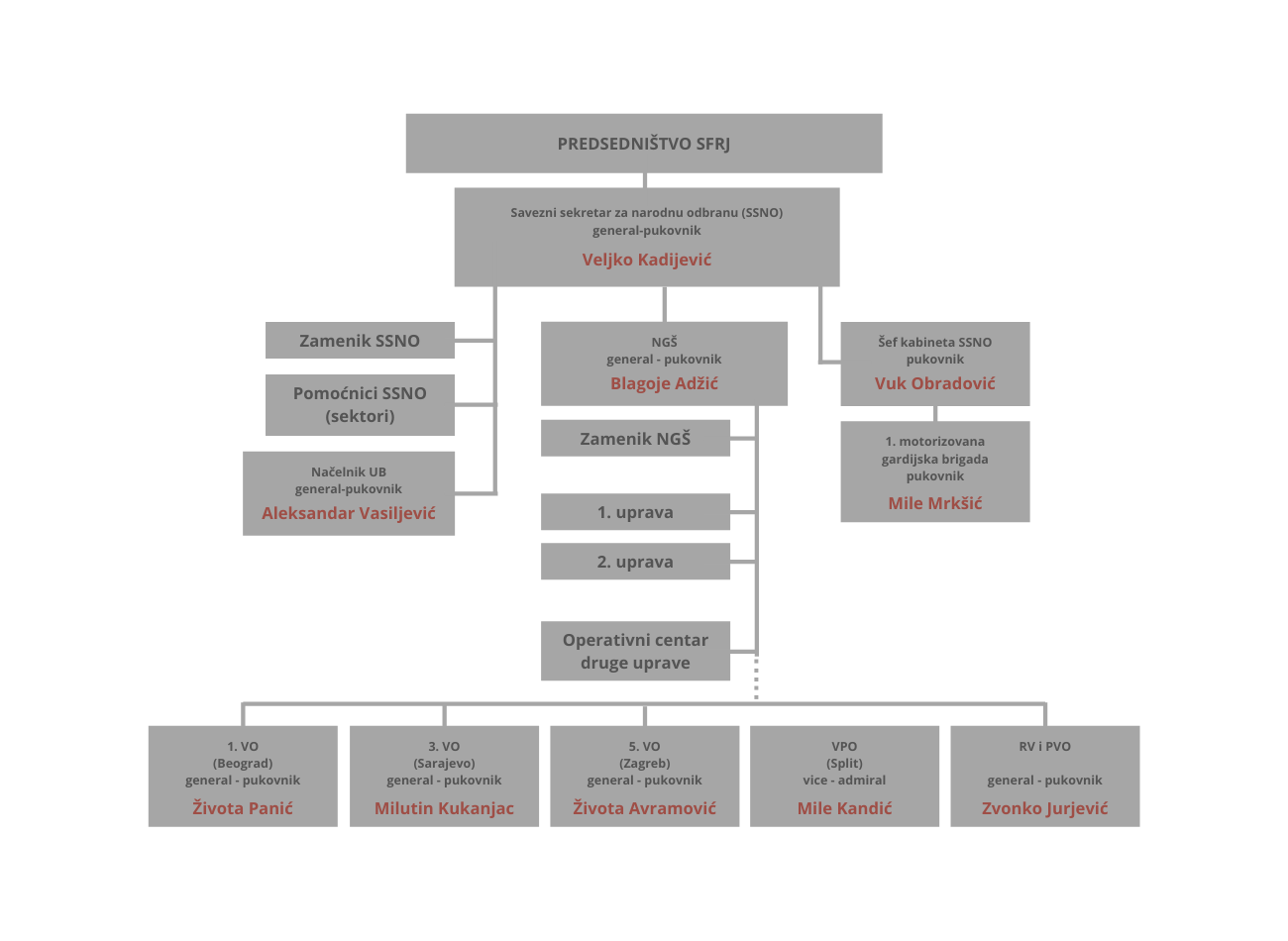
In mid-September 1991, the first camp on the territory of Serbia was established in an abandoned hunting lodge on the outskirts of the village of Begejci in the municipality of Žitište. This camp was created on the basis of an oral order issued by the Federal Secretary of National Defense, Veljko Kadijević, on September 14, 1991.
At the same time as the establishment of the first camp, the command of the 1st Military District also formed a commission for the “identification, security, and regulation of the status issues of persons deprived of liberty in the conflicts on the territory of the Republic of Croatia.” This commission, composed of officers of the 1st Military District of the JNA, was tasked with keeping records of those deprived of liberty, as well as determining the collection points and methods of their accommodation, their material and financial support, and their exchange.
Soon after, the Command of the 1st Military District issued the “Instructions on the Treatment of Persons Who, in Connection with the Internal Armed Conflicts on the Territory of the 1st Military District, Fall into the Hands of JNA Units.” The instructions stipulated that the “accommodation of persons deprived of liberty shall be carried out in collection centers, the locations of which, within their zone of responsibility, are determined by the corps commander and the commander of the 1st Military District.” The same instructions also defined that the “external and internal security of the collection centers shall be provided by Military Police units.”
Formally, the commanders of all the camps were appointed by the command of the 1st Military District. However, from the testimonies of the detainees in these camps, as well as from certain documents, it is clear that responsibility for the camps lay with the Security Administration of the Federal Secretariat for National Defense, which at that time was headed by General Aleksandar Vasiljević.
of the SSNO deployed operational groups of security officers to the camps, tasked with identifying individuals upon their arrival in the prison camps, conducting informational interviews with the detainees, and reporting on these matters to the Security Administration.
The decision on who had the right to access these camps — which included members of the Territorial Defense from the Vukovar area, as well as members of the militia of SAO Slavonia, Baranja and Western Srem (SAO SBZS) — was made directly by the Security Administration.
In its research, the Humanitarian Law Center (HLC) established that the guards and wardens in the camps were members of the reserve units of the JNA Military Police, while those who interrogated the detainees were JNA officers, as well as members of the Territorial Defense and the militia from the territory of the so-called SAO SBZS.
Captured civilians and fighters spent from a few days up to nine months in the camps. Around 7,000 people passed through the camps, with about 3,500 being held there for longer periods.
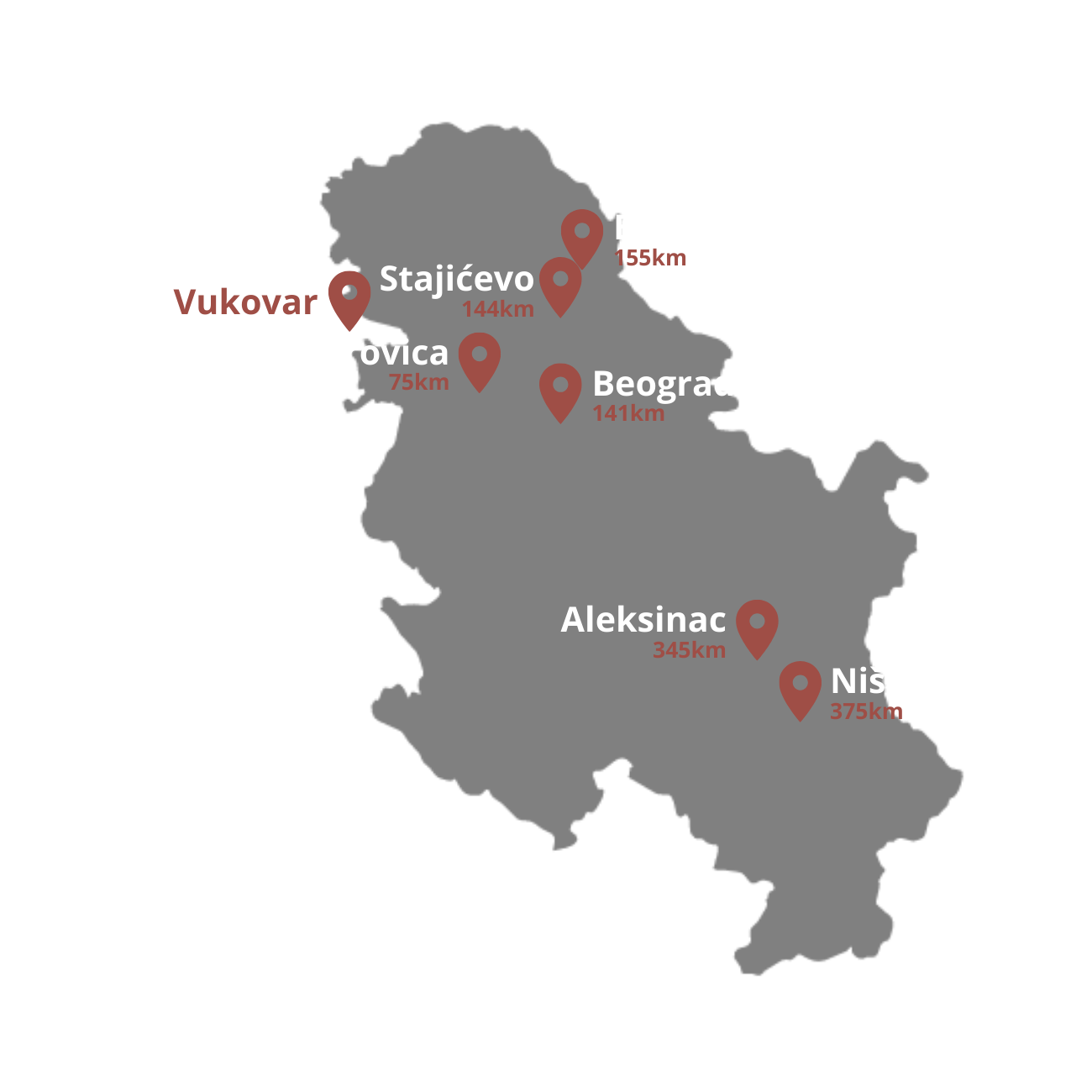
Logori u Srbiji
The largest camp established in Serbia was located in the Correctional Facility (KPD) in Sremska Mitrovica. In addition to this camp, there were also camps in the Banat villages of Begejci and Stajićevo, as well as in the JNA barracks in Aleksinac and the Correctional Facility in Niš. From these camps, some detainees were transferred to the premises of the Military Investigative Prison in Belgrade.
Transit centers
In Serbia, there were also smaller, transit camps and centers where detainees stayed for several days before being transferred to some of the larger camps. Such there were several, and captured Croats testified about facilities in Šid, the Military Police training center in Bubanj Potok, the JNA barracks in Paragovo, and others.
Begejci
In mid-September 1991, the first camp on the territory of Serbia was established in an abandoned hunting lodge on the outskirts of the village of Begejci in the municipality of Žitište. This camp was established on the basis of an oral order issued by General Veljko Kadijević on September 14, 1991.
The command of the 12th Corps of the JNA, the so-called Novi Sad Corps, headed by Major General Mladen Bratić, was responsible for setting up the camp in Begejci. After his death in November 1991, Major General Andrija Biorčević was appointed as the head of the Novi Sad Corps.
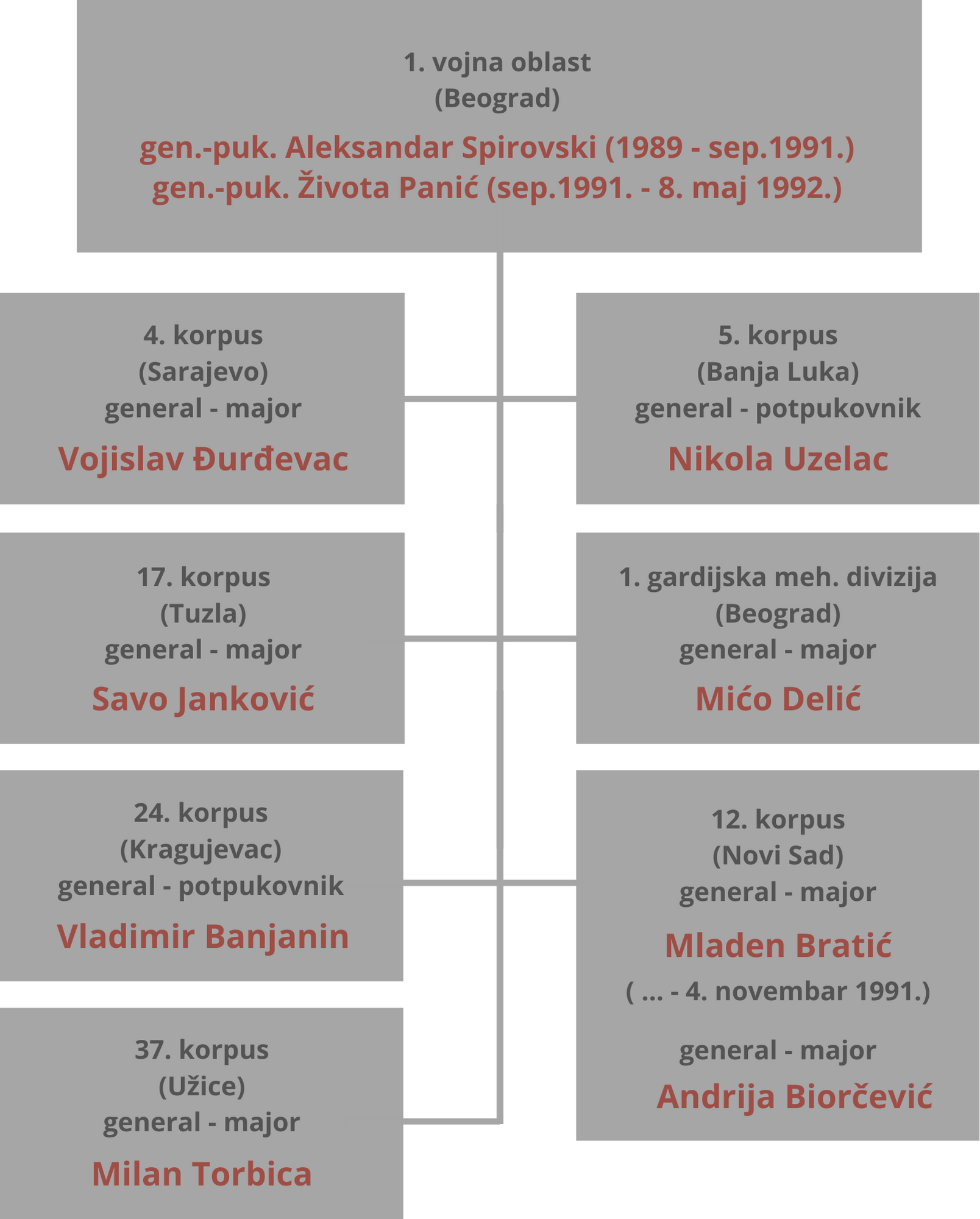
The commander of the camp in Begejci was Lieutenant Colonel Nikola Petrović from the Zrenjanin garrison.
Despite the formal appointment of Lieutenant Colonel Nikola Petrović as the camp commander, detainees from the Begejci camp testified that real authority over the camp was held by Lieutenant Colonel Miroslav Živanović, head of the Department for General and Office Affairs in the SSNO Security Administration, whom they saw in the camp and who introduced himself to them as the camp commander.
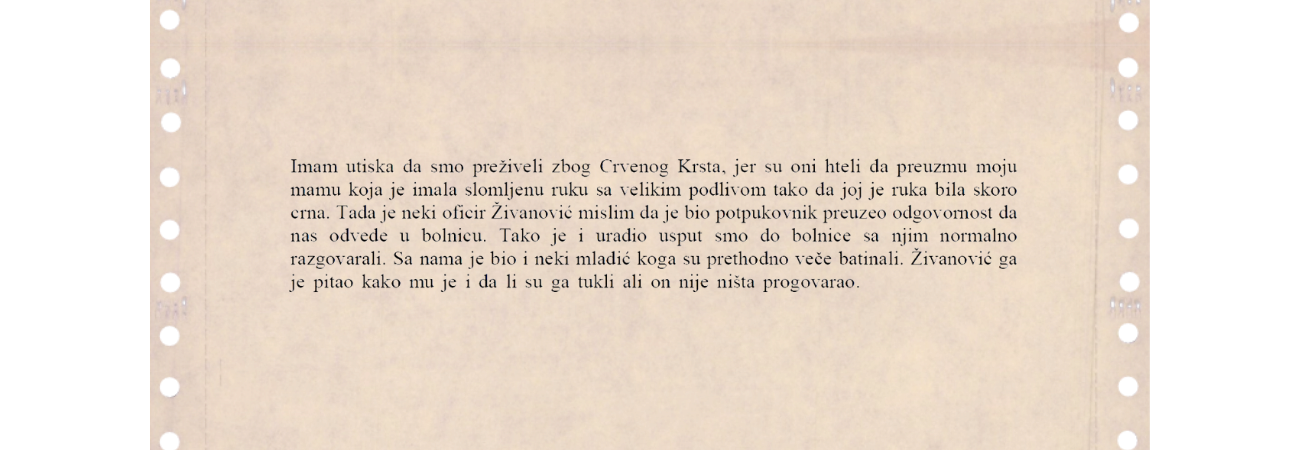
In the first half of October 1991, the first detainees arrived in Begejci from the JNA barracks in Bubanj Potok – civilians and fighters of Croatian forces from Berak, Šarengrad, Opatovac, Ilok, Tovarnik, and Valpovo.
Starting from November 11, Croatian civilians captured in Vukovar neighborhoods such as “Boško Buha,” “Švapsko Naselje,” and others, which had been taken by the JNA together with the TO and volunteer units in early November, were brought in from the “Velepromet” collection center.
The third large group of prisoners arrived at the camp in several buses, following the surrender of Croatian civilians and fighters in Borovo on November 20.
Among those imprisoned in the Begejci camp were minors and individuals over the age of 85. Around 37 women were also detained. At the time of the camp’s closure, it held
.
Stajićevo
The camp at the Livade farm in the village of Stajićevo was established on November 20, 1991, based on the order of the 1st Military District issued on September 15, 1991. This camp was within the responsibility zone of the 24th Corps of the JNA, whose command, together with the security organs of the 1st Military District command, was tasked with the establishment, organization, and control of the camp. According to the order of the 1st Military District command, the “staff for the Collection Center” was provided from the personnel of the Zrenjanin garrison.
Two days after its establishment, the command of the 1st Military District of the JNA reported to the General Staff of the Armed Forces of the SFRY about the formation of the 33rd prisoner-of-war camp in the village of Stajićevo.
As in Begejci, Lieutenant Colonel Nikola Petrović from the Zrenjanin garrison was appointed as the camp commander, however, real control was exercised by Lieutenant Colonel Miroslav Živanović from the Security Administration.
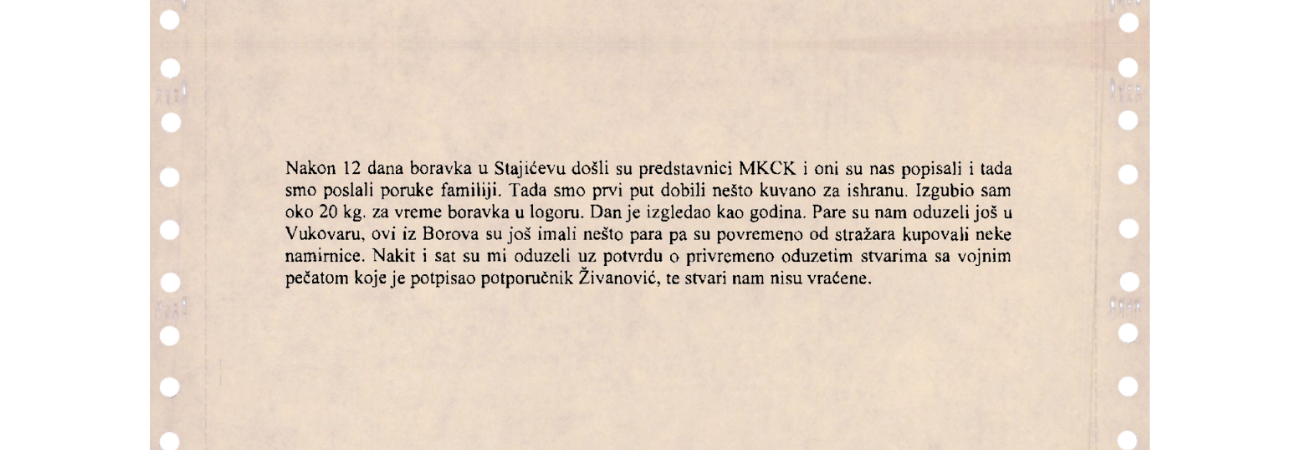
The majority of detainees in the Stajićevo camp were captured in the Vukovar area after the fall of the city.
This camp held women, minors, and the wounded. Around 660 detainees were kept in Stajićevo for a longer period, and in total more than .
Correctional Facility Sremska Mitrovica
On November 21, 1991, the command of the 1st Military District of the JNA issued an order for the establishment of a camp in the Sremska Mitrovica Correctional Facility, which read:
According to the same order, an officer from the 1st Military District was appointed as the warden of the camp within the Sremska Mitrovica Correctional Facility, namely JNA Major Zoran Ranđelović. However, detainees testified to the presence of Lieutenant Colonel Miroslav Živanović from the SSNO Security Administration in this camp as well.

According to data from the Ministry of Defense of the Republic of Serbia, Živanović was temporarily reassigned from the Belgrade garrison to the Sremska Mitrovica garrison during 1991 and 1992.
In addition, an order from the SSNO Personnel Directorate indicates that on January 7, 1992, Miroslav Živanović was sent to the “prisoner of war center” in Sremska Mitrovica.
At the head of the SSNO Security Administration’s investigative operational team in the Sremska Mitrovica Correctional Facility was Colonel Jugoslav Maksimović, while the security of this camp and the “execution of police duties regarding persons deprived of liberty” housed in the camp was carried out by 10 military policemen of the 1st Military District.
Around 90 women were also detained in the Sremska Mitrovica Correctional Facility. Approximately 1,600 detainees were kept there for extended periods, and in total around . Detainees were held from several days up to nine months. The camp was closed in mid-August 1992.
JNA Barracks in Aleksinac
On November 22, 1991, the command of the 1st Military District ordered the transfer of 400 prisoners from the correctional facility in Sremska Mitrovica to Aleksinac due to a lack of space. The transfer of detainees was carried out with eight buses under the command of an officer from the 376th JNA Motor Transport Battalion.
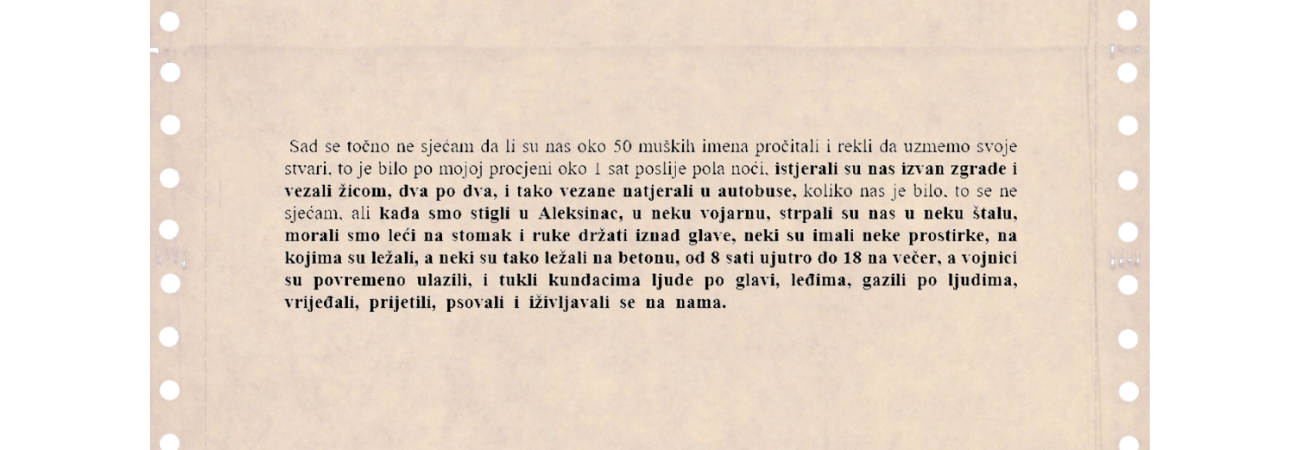
Niš Correctional Facility
The camp in Niš was located within the Niš Correctional Facility. This camp was under the control of the JNA Military Police.
It is not clear who the commander of this camp was. In their testimonies, detainees stated that the commander of the Niš camp was a certain Colonel Radulović. Prisoners recalled that Radulović had served in Šibenik or Zadar before becoming commander of the camp in Niš, and that he had been captured by the Croatian Army prior to his arrival in Niš. In a statement given to the media, Branimir Kosec, a priest from Vukovar who had been held in the Niš camp, recalled that the camp commander was a certain Colonel Jovanović.
For this reason, the Humanitarian Law Center submitted a request for access to information of public importance to the Ministry of Defense, asking who had been the commander of the Niš camp in the period from November 18, 1991, to February 26, 1992. According to the Army that we received, the Command of the Land Forces does not possess the requested information.
Among the interrogators in Niš were also members of the Military Police from military post 1219 Niš, while belongings confiscated from the prisoners were handed over to Military Police unit 1410.
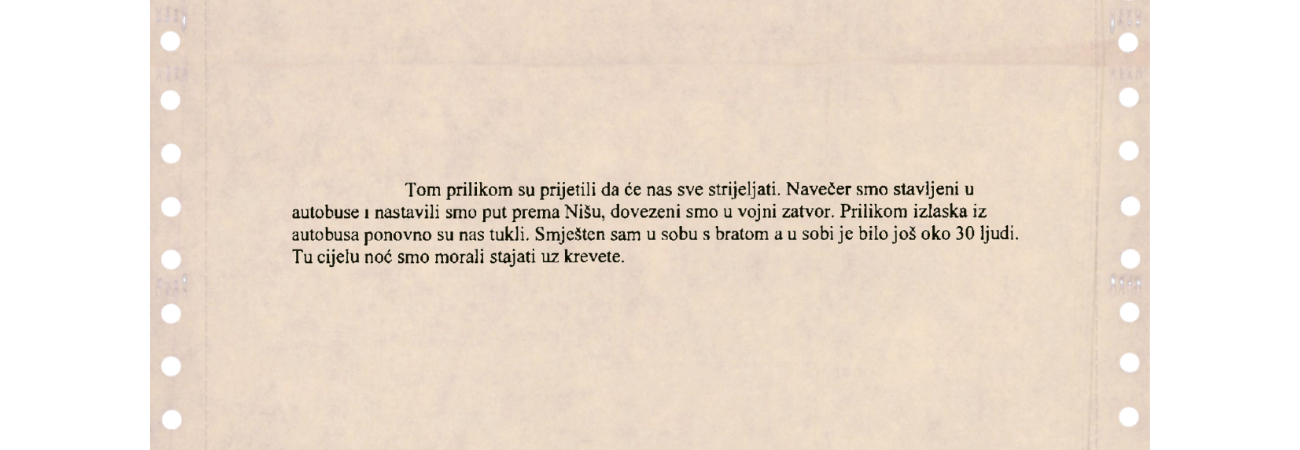
The first detainees were transferred to the Niš Correctional Facility in November 1991 from Sremska Mitrovica due to a lack of space. After the closure of the camps in Begejci and Stajićevo in the second half of December 1991, a portion of the detainees was moved to Niš. According to HLC data, there were no women among the detainees in the Niš Correctional Facility, but there were minors.
From this camp, there were released .
Military Investigative Prison in Belgrade
From December 1991 until the beginning of the summer of 1992, several groups of captured members of the Croatian National Guard and the Ministry of the Interior were transferred from the camps to the Military Investigative Prison in Belgrade. Those detainees against whom the Military Prosecutor’s Office conducted investigations and filed indictments were held here for longer periods.
Around 120 detainees were released from this prison in mid-August 1992.
Living conditions in the camps
In all the camps, detainees had limited access to water and hygiene supplies. Prisoners slept on concrete floors with straw or on thin mats, except in the Niš Correctional Facility, where they were placed in cells equipped with bunk beds. Toilets in Stajićevo and Begejci were improvised pit latrines. These camps had no heating. Due to the large number of detainees, in most of these facilities prisoners slept in very cramped conditions, lying next to each other “like sardines.”
Detainees were forbidden from moving within the camps without the permission of the guards. Food in the camps was insufficient and of poor quality.
Psychological and physical abuse of detainees
The detainees in the camps in Serbia, especially those suspected of being members of the Croatian National Guard or the Croatian Ministry of the Interior, were subjected daily to psychological and physical abuse, violence, and torture by JNA officers and reservists, members of the Territorial Defense from the Vukovar area, as well as members of the SAO SBZS militia who came to the camps. All prisoners were subjected to humiliation and starvation.
Death of detainees
As a result of abuse or the lack of adequate medical assistance in the camps on the territory of Serbia, at least 14 detainees died.
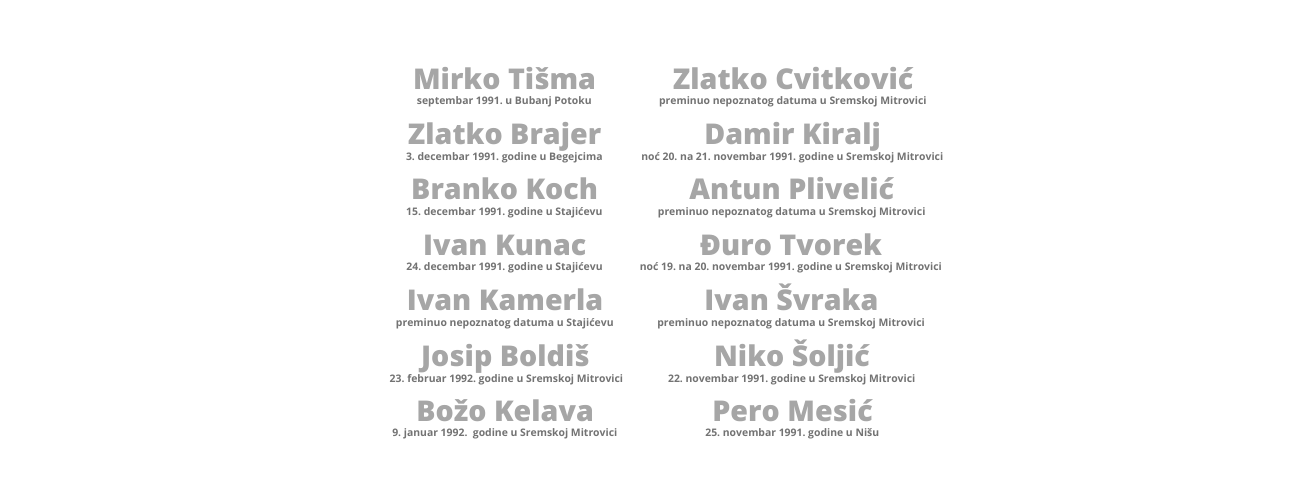
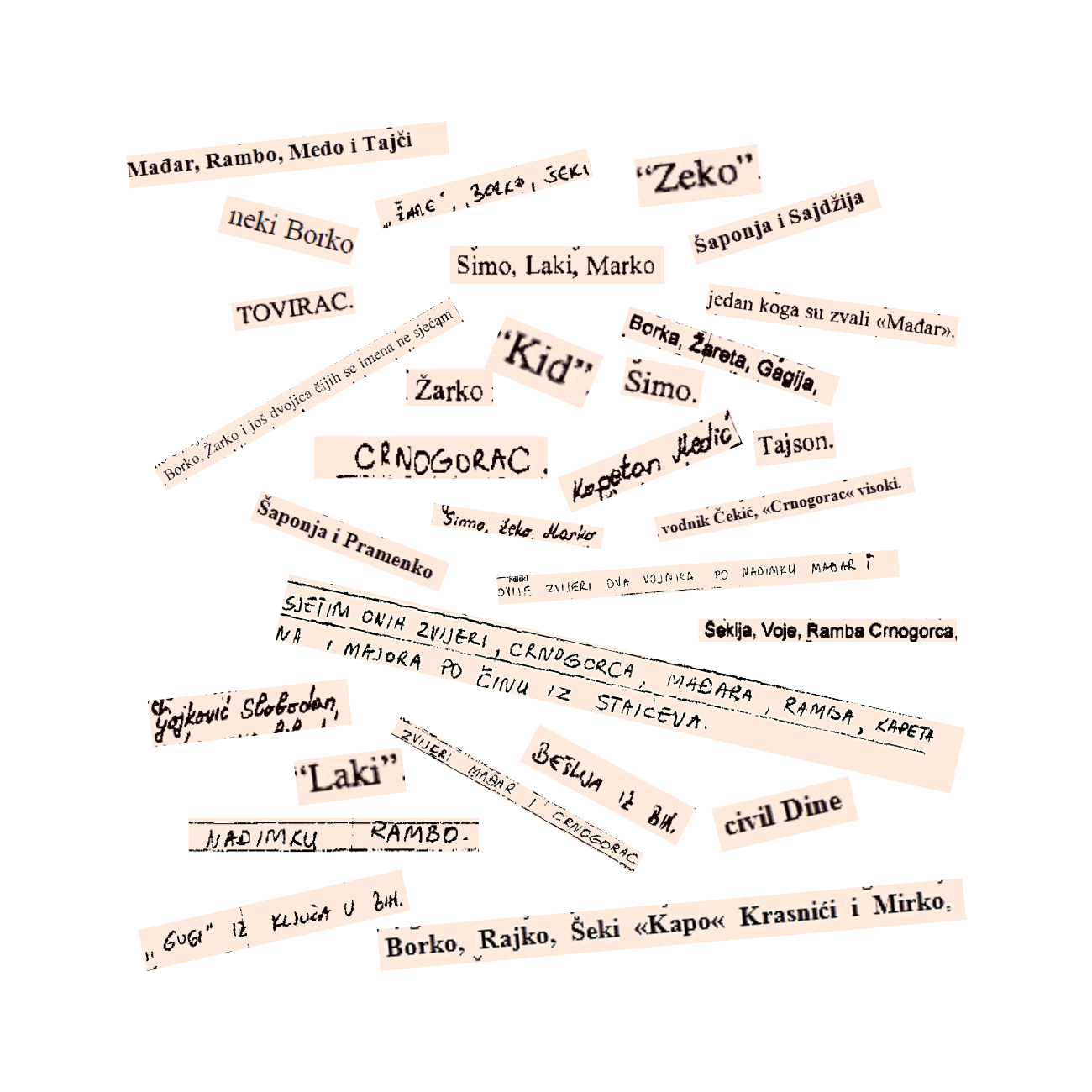
Ispitivanje zatočenika
Detainees were taken to special rooms for interrogations that were accompanied by beatings, insults, and mistreatment. They were forced to sign prepared statements declaring that they were responsible for war crimes, rapes, or killings.
The guards and wardens in the camps were members of the reserve units of the JNA Military Police, whom the detainees mostly knew only by nicknames or surnames; while those who interrogated the prisoners were JNA officers, as well as members of the Territorial Defense and the SAO SBZS militia.
In most cases, interrogators in the camps did not disclose their names to the detainees, so the prisoners could only identify them by their ranks and uniforms or, most often, simply as military personnel. Some of the interrogators used nicknames or pseudonyms during the questioning of detainees.
The camps in Begejci and Stajićevo were closed in December 1991, when some of the detainees were exchanged and others were transferred to the camps in Sremska Mitrovica, Niš, Aleksinac, and Belgrade. The camp in Niš was closed in February 1992, while the prisoners in Sremska Mitrovica and the Military Investigative Prison in Belgrade remained until mid-August 1992, when a prisoner exchange was organized on the principle of “all for all.”
Epilogue
Court proceedings
The camps for Croats in Serbia were the subject of two indictments by the ICTY Prosecutor’s Office, namely in the cases against Slobodan Milošević and Goran Hadžić. The indictment against the former President of Serbia, Slobodan Milošević, charged him, among other things, with the “prolonged and routine imprisonment and detention of thousands of Croatian and other non-Serb civilians in detention facilities in Croatia and beyond, including prison camps located in \[…] Serbia,” as well as with establishing and maintaining inhumane living conditions for Croatian and other non-Serb civilians detained in these facilities, and for the torture, beatings, and killings of Croatian and other non-Serb civilians held in these facilities.
Goran Hadžić, Prime Minister of the self-proclaimed SAO Slavonia, Baranja and Western Srem, and later President of the Republic of Serbian Krajina, was indicted before the Tribunal for the unlawful imprisonment or detention under inhumane conditions of Croats and other non-Serbs in several detention facilities in Serbia, such as Stajićevo, Begejci, the prison in Sremska Mitrovica, the prison in Šid, as well as several facilities in Croatia.
These proceedings ended with the deaths of the accused.
In May 2008, the Vukovar 1991 Lawyers’ Association and the HLC filed a criminal complaint with the Office of the War Crimes Prosecutor, naming 54 commanders and guards in the camps in Serbia — Sremska Mitrovica Correctional Facility, Niš Correctional Facility, the Military Investigative Prison in Belgrade, Begejci, and Stajićevo — by name, surname, or nickname. Two years later, the Deputy War Crimes Prosecutor stated that a preliminary investigation was underway; however, to this day, only one person has been convicted in Serbia for crimes committed in the camps on the territory of Serbia.

Lieutenant Colonel Miroslav Živanović died in 2013.
Proceedings against Aleksandar Vasiljević are ongoing before the Croatian judiciary. The trial is being conducted in the absence of the accused.
Culture of Remembrance
In Serbia today, there is no remembrance of the camps in which Croats were detained in 1991 and 1992.
In recent years, former detainees of the camps in Serbia have submitted multiple requests to the Serbian authorities for the installation of memorials at the sites of detention. The initiative advanced the furthest in 2009, when, together with representatives of the local government in Zrenjanin, an agreement was reached for former prisoners to visit Stajićevo, lay flowers, and unveil a memorial plaque. This initiative, however, encountered opposition from associations of disabled war veterans and parts of the public, which led to the cancellation of the previously agreed visit under the pretext that the Serbian authorities could not guarantee the safety of the visitors.
In July 2016, the then Prime Minister and current President of Serbia, Aleksandar Vučić, received members of the Vukovar 1991 Lawyers’ Association and on that occasion promised that he would do everything necessary to identify the individuals who committed crimes against detainees in the five camps in Serbia during the 1990s, as well as that a monument would be erected to the victims.
The monument was never realized, and with the adoption of the Law on War Memorials in 2018, it was almost entirely prevented, since such a monument would in any case not be considered “of importance for nurturing the tradition of Serbia’s liberation wars,” as stipulated by the Law.
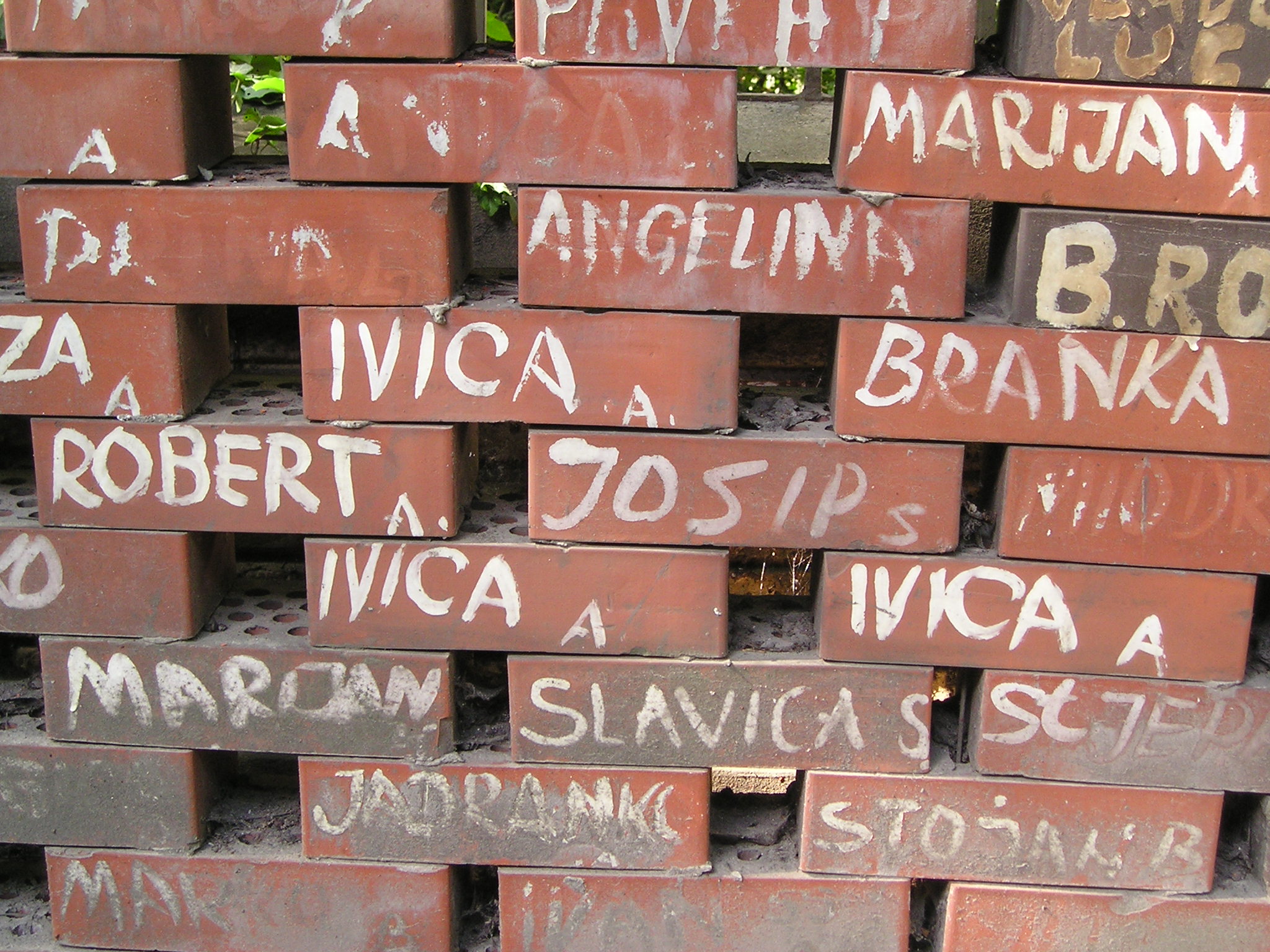
In mid-2017, the then President of the Republic of Croatia, Kolinda Grabar-Kitarović, announced to the public that an agreement had been reached with the President of Serbia, Aleksandar Vučić, on a visit of former detainees to Stajićevo.
Officials of Serbia, led by Aleksandar Vučić, never publicly commented on this news. The visit has not taken place to this day.






















